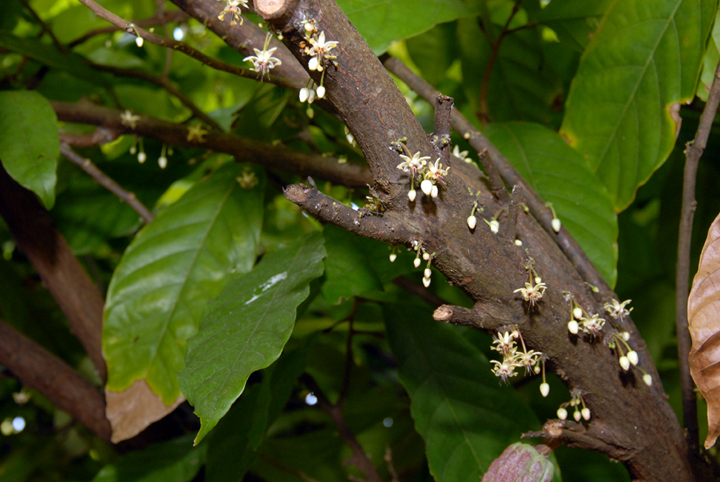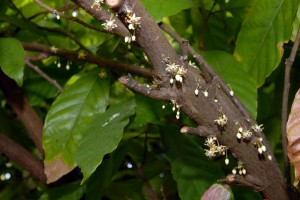P.R. stands to gain from sustainable cocoa crops


Cocoa trees, which are typically between 15 and 24 feet tall, produce pods that grows on the trunk on large branches.
For the past 100 years, worldwide chocolate consumption has reflected a 3 percent annual increase as demand for tasty cocoa-based products has gained ground. Today, the current global market value of annual cocoa crops is estimated at $5.1 billion, according to World Cocoa Foundation statistics.
That said, Puerto Rico has a lot to gain from developing its own cocoa crops — which take about five years to mature and are considered among the most sustainable — to insert itself into the lucrative market, public and private sector representatives said during the first cocoa harvesting seminar held in Mayagüez.
“With this supply and demand scenario, Puerto Rico should be at the forefront and begin to explore alternatives for planting and propagation of the cocoa tree, which can be a suitable alternative to bring benefits to agriculture and the environment in Puerto Rico,” said Eduardo Cortes, director of operations and cocoa for Chocolate Cortes in Puerto Rico and the Dominican Republic.
Some 50 farmers participated in the seminar sponsored by Chocolate Cortes that was designed to encourage, educate and assist local farmers on the art of harvesting cocoa trees. Participants gained theoretical and practical knowledge on the crops that, due to their nature, are a suitable alternative for Puerto Rican farmers.
Puerto Rico, unlike the Dominican Republic, is not a major cocoa producer, despite having the right conditions and infrastructure available for successful crops. During the workshop, participants were divided into groups to learn about the different aspects of the crops. Farmers were guided through the process step-by-step of laying down the conditions, such as setting up greenhouses and nurseries, sowing and transplanting plants, and post-harvest techniques.
“The new generation of farmers gives us hope, since there is a resurgence of interest in cultivating the land and they are aware of the global demand for food,” Cortes said. “With a good product selection and development, taking into account the added value of aroma, taste, organic certification, social and environmental issues, planting cocoa tree may be a suitable alternative for Puerto Rican agriculture.”
About 70 percent of the world’s cocoa comes from West Africa, followed by Indonesia. However, despite their output, these countries are unable to keep up with increased demand, Cortes said.
Right conditions for good crops
The advantage of being an island with rich soils, and ability to start virtually from scratch, gives Puerto Rico the opportunity to develop the planting of pre-selected, high quality and high performance clones to achieve higher production per area than other countries, Cortes noted.

Ricardo Goenaga, TARS Research Leader/Plant Physiologist and cocoa researcher, showed cocoa cut tests, differences in weight of dry beans, how to measure moisture and tasting of cocoa beans and chocolate.
“Our farmers also need to create a unique culture of engaging in post-harvest fermentation, cleaning, drying and storage to create an exceptional quality cocoa that can be sold with at an optimal profit margin” Cortes said.
Cocoa crops are considered among the world’s most sustainable, as contribute to reforestation and fuel healthy ecosystems. Cocoa trees, which are typically between 15 and 24 feet tall, produce pods that grow on the trunk on large branches. Crops are harvested in winter and spring but may vary by region and agro-environmental cycles.
“Cocoa cultivation requires reproducing the trees in nurseries, prepping the land, establishing the field, pruning, shade management, irrigation, pod harvests, fermentation and drying process, among other things. After drying, the seed or ‘beans’ can be further processed into chocolate,” said Brian M. Irish, horticulturist-curator and project leader for plant genetic resources at the Tropical Agriculture Research Station, which also co-sponsored the workshop, along with the University of Puerto Rico and the Dominican Institute of Agriculture and Forestry Research









